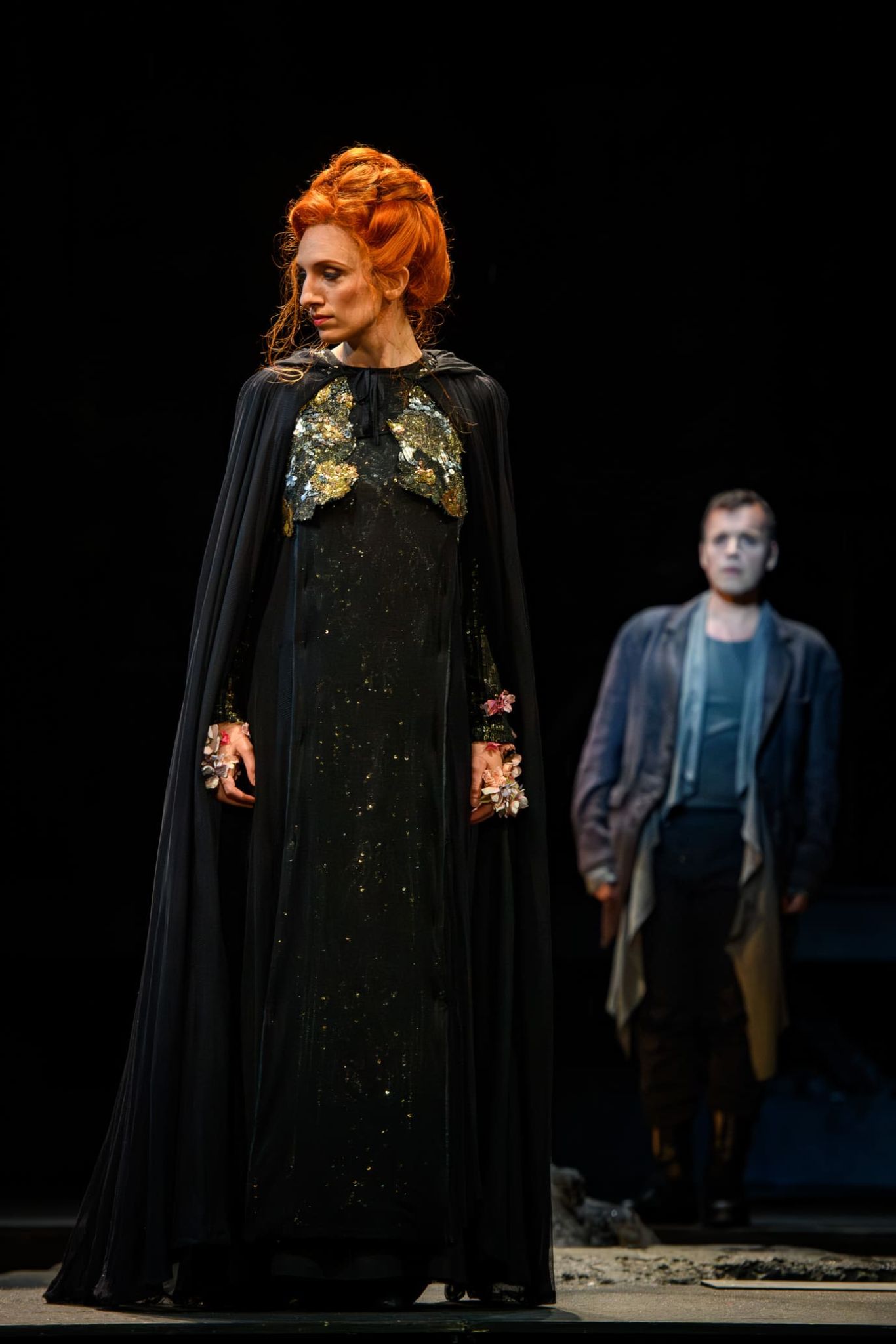
Crédit : Mirco Magliocca
Poetry right down to the tips of your hair
17/05/2024 - Forum Opéra, Thierry Verger
Pelléas et Mélisande, proposed by Eric Ruf, General Administrator of the Comédie Française, and co-produced by the Théâtre des Champs Elysées, the Opéra de Dijon, the Stadttheater Klagenfurt and the Opéra de Rouen Haute-Normandie, is being revived at the Théâtre national du Capitole in Toulouse. During its travels, this production has seen a number of casts, notably that of the TCE, which has been reviewed in these columns. The one offered in Toulouse is a marvel, supported by a staging full of grace and poetry and an acting style that captures the audience from the very first act and keeps them on the edge of their seats throughout. The first three acts follow on from one another, and we almost wish that the last two would have done the same, the interval breaking the spell somewhat, breaking the web that Ruf weaves inexorably around the spectator.
This charm, consubstantial with Pelléas, this very special, unique and inimitable atmosphere, is a poetry of words and music, where every word counts, every intonation; it is, for the director, the search for meticulous movement, slow-motion movements where steps are measured, closeness constrained, embraces fleeting.
The backdrop is dark, as black as the drama unfolding before our eyes. A forest? A sea? A lake? A pond? Whatever. A huge net at curtain’s rise dips in the water. It will eventually lift, releasing the energies that will lead Pelléas to Mélisande. But water will remain omnipresent. Even in the V, surrounding the bed of the dying Mélisande, making her definitively inaccessible to Golaud (who will only approach her once she is dead – unlike Arkel).
And then there is the subtle interplay of colours. At the beginning of I, Mélisande is dressed entirely in white with an endless train, but as soon as she comes into contact with Golaud, and as if by mimicry, she dresses in dark colours. This is how she will be dressed until the end of II, when she and Pelléas sink into the cave of lies.
And then suddenly, in III, the climax of the work, this scene at the window where, in the immensity of the night, Mélisande suddenly appears in majesty, dressed all in gold and light, like the femme fatale that Klimt so often portrayed. Colour then floods her character, her hair, her immense red head in which Pelléas loses himself and which will lose him. This very “fin de siècle” atmosphere takes us back to the years of the Viennese Secession. Doesn’t the long, interminable and fatal, almost lascivious embrace of Pelléas and Mélisande in III take us back to “Der Kuβ” (“The Kiss”)? And should we not see the enigmatic three maids, who appear at least three times, as a reference to the painting “Die drei Lebensalter einer Frau” (“The Three Ages of Woman”), almost contemporary with the creation of Pelléas? As you can see, it is Mélisande who takes centre stage when love declares itself. In the third act, she captures the light that follows her movements, while Pelléas remains in the shadows. And the knife that Golaud stabs into his half-brother’s back simultaneously extinguishes all flame in Mélisande, who can only die, like a candle running out of oxygen that burns out slowly and definitively.
If colour is carried by Mélisande, it is also carried by the orchestra. It all starts in darkness (the music stands only light up after a few seconds – hence the inevitable false start from the strings) but very quickly the colours, particularly those of the winds, make the pit shine. The vast Debussian kaleidoscope was to unfold and illuminate three hours of music; the precision with which Leo Hussain made the Orchestre National du Capitole blaze is to be commended. But let’s save the best for last. The vocal line-up gives us a glimpse of what could be perfection in this repertoire; the casting has clearly been made with a great knowledge of the forces involved and a perfect match for the roles. Anne-Sophie Petit is Yniold, at once a fragile toddler and a playful child. Janina Baechle, with her darkened voice, is perfect as Geneviève, worried about the future of her boys. Franz-Josef Selig, the big man, who struggled a little to stabilise his voice in Act I, gives a final performance in which the whole range, which can descend very deeply, is magnificently inhabited. The German-speaker’s French diction is impeccable. Tassis Christoyannis is Golaud. His voice is strong and exudes authority. He portrays the inability to love and ends up taking refuge in the darkness. Last but not least, Victoire Bunel and Marc Mauillon gave a performance of confounding accuracy this evening. She is a complex Mélisande, wild and fatal, distant and loving at the same time. The voice is solid, full of harmonics that enrich the speech. He is the perfect embodiment of fine French singing, with a clear, ever-singing voice, capable of power when necessary, and meticulous diction. The Olympic flame had passed through Place du Capitole a few hours earlier. Clearly, his energy was infectious.